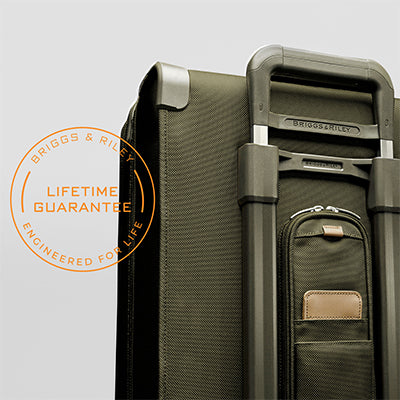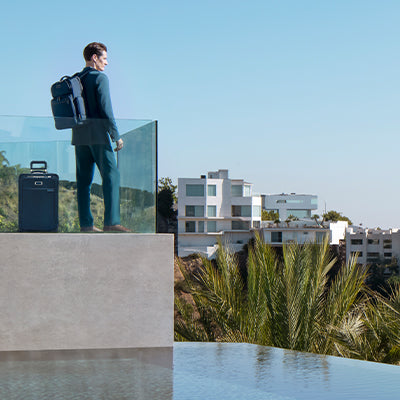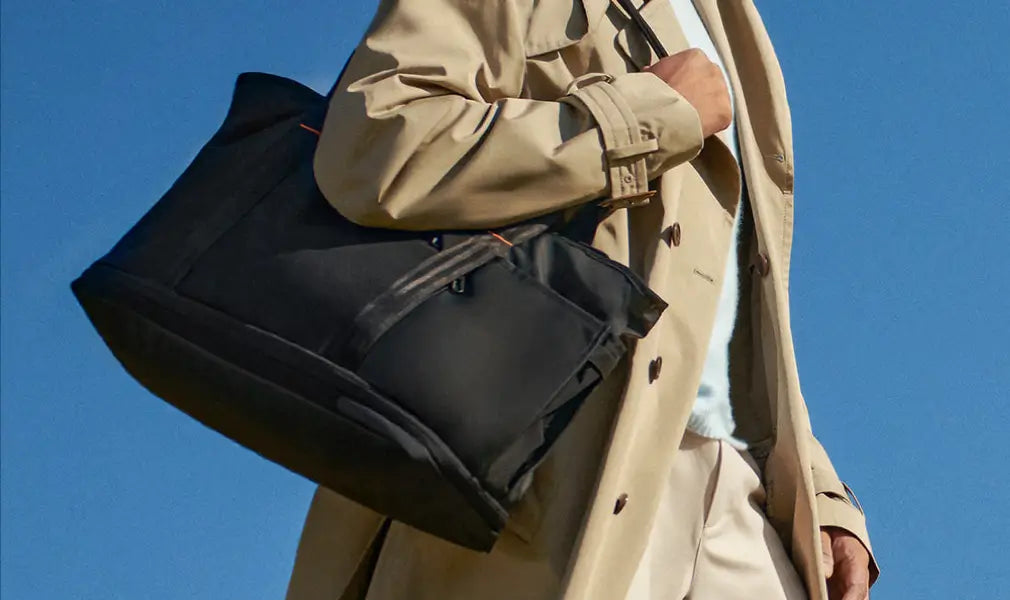When thinking of traveling to France, Paris is often top of mind, but for those who are seeking sun and sand, there’s no place better than the south of France. While Nice, Cannes, and Monaco may come to mind (aka the Côte D’Azur), the best way to see this beautiful region is by visiting some of the smaller towns that emulate the true French spirit. You’ll be treated to quintessential things to see, do, and eat that you can’t otherwise experience in your own home town. In other words, why travel halfway across the world to shop the same shops and limit your palate to the same old cuisine?
With that said, we’ve rounded up 6 spots in the South of France that you should absolutely have on your radar — but don’t worry. If you’re still set on seeing the aforementioned French Riviera anchor cities, we’ve included a few spots on the list that aren’t far away so you can kill two oiseaux with one stone.
St. Paul-de-Vence
There’s no shortage of charming villages in France, but Saint-Paul-de-Vence is simply magical. Perched high on a hilltop, it’s easily considered one of the most beautiful villages in the Cote d’Azur. Between the winding cobblestone streets, the remnants of some of the greatest artists and literary greats, and charming restaurants with jaw-dropping views, it’s hard to believe Saint-Paul-de-Vence is a short (and beautiful) drive from the bustling city center of Nice.
During the roaring ‘20s, Saint-Paul caught the attention of who we now consider some of the greatest artists in the world — Paul Signac, Chaïm Soutine, and Raoul Dufy, to name a few — all of whom used this fairytale-like village as their muse. The Côte d’Azur has long been associated as a playground for the rich and famous and Saint-Paul-de-Vence was no exception. The paradisiacal village has attracted the likes of an array of notable personalities, including Ernest Hemingway, Zelda and F Scott Fitzgerald, Yves Montand, Marc Chagall, Charlie Chaplin, Orson Welles, Line Renaud, Liza Minnelli, Kirk Douglas, Gene Wilder, and Michael Caine.
What to Do:
- Fondation Maeght: Going on 50-plus years, the Fondation Maeght features the largest and most influential collections of 20th-century art in all of Europe.
- Cimetière de Saint-Paul-De-Vence: Dating back to the 16th century, this hilltop cimetière is the resting place of famous locals such as Chagall (known for his paintings of the area) and Marguerite et Aimé Maeght.
- Jacques Prévert’s House: Ask a local to point you in the direction of French poet and screenwriter Jacques Prévert’s house, an unapologetically charming stone abode where he lived with his wife Janine.
- La Maison Godet Parfum: This perfume house dates back to 1901 and has since then whipped up umpteen fragrances that pay homage to everything from cognac (the family’s first business) to the muses of some of the greatest artists milling around Saint-Paul-de-Vence back in the day. All fragrances are made locally and it’s not uncommon that they contain ingredients found right in the village — like figs from the tree at La Colombe d’Or hotel. The current “nose” is the great granddaughter (Sonia) of founder Julien-Joseph Godet. If you’re lucky enough, she’ll be in the shop the day you visit; brace yourself for a real treat.
Where to Eat: Le Tilleul: Not only is this charming eatery has a cozy outdoor patio that’s perfectly positioned for people watching and immersing yourself in village life, the food is fantastic. The seasonally changing menu is gastronomic, yet comfortable — you can even find a simple sandwich on the lunch carte if you aren’t in the mood for a feast, but still want to enjoy the views. There’s always a complimentary amuse-bouche, but don’t let that stop you from ordering a starter like a crispy goat cheese salad with figs, nuts, and honey dressing. For the mains, the linguini con le vongole — aka linguini with clam sauce — is a sure-fire winner as is the lightly seared beef with olive oil mashed potatoes.
Where to Stay: One can’t discuss lodging options in Saint-Paul-de-Vence without suggesting La Colombe d’Or, a true historic gem. Back in 1920, the property was known as a cafe and bar called Chez Robinson. In an effort to support his wife Baptistine (Titine), its proprietor—painter/art collector Paul Roux—made additions to the property so that it could facilitate a small three-room inn known as Colombe d’Or. At this time, it served as an artist’s playground for legends such as Picasso and Matisse. Their work, along with pieces from several other greats, still resides in the hotel today for your viewing pleasure. Over the years, the property became a sought-after retreat for celebrities and A-listers alike. The property only has 13 rooms and 12 suites, so you’ll want to book well in advance.
Porquerolles Island
If you’re looking for a unique south of France experience without all of the hustle and bustle, head to Porquerolles Island — it’s truly a place to relax and get away from it all. It takes a little extra effort to get to Porquerolles, but it’s well worth it. There are four ports offering ferries to and from the island: La Londe-Les-Maures, Toulon, La Seyne-Sur-Mer, and Saint Mandrier. Take a little bit of time to research each as you may decide that you’ll want to tack on a few extra days to visit the city of your choosing.
Since 1971, Porquerolles has been considered a national park, so rest assured the landscape is breathtaking. On the southern side of the island, the coast consists of precipitous cliffs and isolated creeks only accessible to hikers. On the flip side, the northern sector boasts sandy beaches and turquoise waters — very much like the Caribbean. If you’re into wine, you’ll be happy to know that two hundred hectares of grapevines were planted on the island which are responsible for producing a top-notch local wine which was one of the first to be classed "vins des Côtes de Provence".
What to Do:
- While there are several forts, the Porquerolles lighthouse, and Sainte Anne church, the best way to spend your time on the island is by renting a bike and exploring the national park (it only takes about a half an hour to get from one side of the island to the other), scuba diving, or taking a sailing cruise.
- There are five main beaches (Plage de Notre Dame is the least touristy yet is considered one of the most beautiful beaches in France) to choose from and given their close proximity to one another, you should be able to visit all of them during your trip.
Where to Eat: Unlike other areas of the South of France, there aren’t a lot of dining options to choose from, but rest assured you won’t go hungry! Boasting both harbor and village views, L'Orangeraie is touted as one of the best restaurants on the island. While there are meat dishes, the menu is heavy on seafood preparations like the grilled catch of the day with seasonal vegetables (colorful veg makes an appearance in many of the dishes), swordfish carpaccio, salmon tartare, fish and chips, grilled prawns, stuffed lobster, swordfish with ratatouille, grilled razor clams, and much more.
Where to Stay: You’re not going to find any five-star accommodations in Porquerolles, yet there are lodgings that are still charming, clean, and comfortable. On the western end of Porquerolles is Le Mas du Langoustier, an enchanting hotel set amidst lush botanical gardens. Owned by the same family since 1912, the property is a peaceful hideaway known for its refined cooking (one of the two restaurants on-site has a Michelin star) and relaxed atmosphere.
The terracotta lodgings are filled with French antiques and the majority of the 48 rooms and suites are spacious and feature a private balcony. From the hotel, there’s access to a small, private beach outfitted with sun loungers if you want to escape the crowds at the larger, public beaches. Other amenities include an outdoor swimming pool, tennis courts, spa, and a complimentary (hourly) shuttle to take guests to the village and port.
Gordes
Located in the department of Vaucluse, Gordes is considered one of the seven most beautiful villages in France due to its privileged position, unique architecture, and abundant charm. The hilltop respite is known for its buildings and houses that are built into the cliff sides. The winding cobblestone streets have been walked upon by artistic greats such as André Lhote, Pierre Chapo, Marc Chagall, Walter Salles, Victor Vasarely, and Pol Mara who considered Gordes home for a period of time. Today, you can take your own stroll to see perfectly restored arcades, and walls, stunning old doorways, and a panoramic view of the mountains and valley of Luberon. While there are typically a lot of cultural festivals (and a wine festival), it’s possible they may be put on hold this summer due to COVID-19, so check the Gordes tourism website for the latest updates.
What to Do:
- Dating back to the 10th century, the commanding Le Château de Gordes houses the Pol Mara museum, contemporary Flemish painter and inhabitant of Gordes.
- Listed as a historical monument, the cellars of the Saint Firmin Palace are cave-like dwellings complete with underground stairways, olive oil mills, and more, all of which have been left behind over several centuries.
- Step inside the Saint-Firmin church to see its beautiful woodwork, colorful interiors, and artwork. While it’s of Romanesque origin, it was substantially transformed in the 18th century.
- Hidden in the green valley, the Abbey of Senanque (12th century) remains one of the authentic examples of primitive Cistercian architecture — it’s actually still inhabited by a society of Cistercian monks today.
Where to Eat: While you’ll find several Michelin star restaurants in Gordes, La Trinquette is a local favorite even though it’s not in the Michelin club. For starters, it has killer views of Gordes from the terrace — make a dinner reservation at the correct time if you want to catch a breathtaking sunset. The real draw, however, is the artful local cuisine that’s perfectly paired with local wines for a true Provencal dining experience. The menu depends on what’s in season, but expect dishes like zucchini blossoms, vegetarian stuffed squash (there are several vegetarian-friendly dishes on the menu), the fresh catch of the day with virgin sauce (sauce virginie), mozzarella with fresh truffles, pork from Ventoux, homemade ravioli stuffed with gambas, and much more.
Where to Stay:
Perfectly positioned in a rooftop village amongst 12th-century fortifications La Bastide de Gordes is a luxurious five-star property that boasts sweeping views of Parc Naturel Régional du Luberon. The grounds are home to imperial cypress trees, 100-year old olive trees, and well-curated nooks to relax and take in the scenery. While the property has been renovated, it was done so in a way to maintain the authenticity of the original building structure. Whether you choose a smaller, well-appointed guest room or a sprawling suite, all of the accommodations are decked out with tasteful yet historic 18th century French charm — there’s also a separate villa on the property that’s available for up to ten guests.
La Bastide features two main restaurants, L'Orangerie and La Citadelle, both of which specialize in Provençal-style cuisine made with local ingredients and paired with regional wines.
Take advantage of the sprawling Sisley spa that was designed to look like a large abbey church to emulate a “place of peace.” There’s an indoor pool (there’s also a stunning outdoor pool), sensory showers, a sauna, and a hammam to partake of before or after your spa services. There’s also a spacious fitness center to help keep you honest in between all of those amazing meals. The hotel also does a great job of hosting activities such as an outdoor cinema, star gazing, musical performances, yoga, wine tours, and more.
Sanary-Sur-Mer
Sanary-Su-Mer is considered the most fashionable seaside town in all of Provence, meaning you’ll find plenty of posh shops, art galleries, and restaurants. The small fishing port has a Mediterranean vibe, complete with its colorful facades and palm tree-shaded terraces; it’s the perfect place to go for a stroll. The port is also home to 100 traditional Provençal fishing boats called “pointus” that are 100-plus years old — some of them are even listed as historical monuments. There’s also a working fishing fleet that sells fresh fish on the quai each morning. Obviously, if you’re traveling, you can taste the fresh catch at many of the restaurants in the area.
What to Do:
- Lace-up a comfortable pair of shoes and take a walk in nature on the Gros Cerveau (Big Brain), a 300-meter high limestone mountain, stretching from east to west and bordering two distinct landscapes: coastal and hinterland.
- Take a dip in Plage de Portissol, a beautiful little beach located in a small bay known for its crystal clear aquamarine and cobalt blue waters.
- Stroll through Grand Marche de Sanary-sur-Mer which is considered one of the “most beautiful markets in France.” It only takes place on Wednesdays from 8 a.m. to 1 p.m. (get there early to beat the crowds) under the alleys on the north quay of the port. There are more than 320 exhibitors on display selling fresh produce, fish and seafood, meat, delicatessen products, locally-made Provençal food and fabrics, utensils, clothing, furniture, toys, flowers, and plants.
- Walk up the ancient Tower of Sanary (dating back to 1300) to get a stunning bird’s eye view of the harbor.
- Along with friend Frédéric Dumas, Jacques Cousteau invented, refined, and tested the aqualung in the waters near his home in Sanary-sur-Mer. A trip to the charming Musée Frédéric-Dumas in the old port will give you a snapshot of the evolution of what was once considered an extremely treacherous sport before morphing into the safer and more mainstream scuba diving practices of today.
Where to Eat: Positioned on the spot of a former yacht club on the marina, Le Garlaban is a Michelin star restaurant specialized in refined French cuisine. The specialty dish is sea bass in a puff pastry crust (for two people) with fleur de sel, sweet potato mousseline with yuzu juice, braised fennel, and candied lemon. Other standouts include roasted Saint-Pierre with bacon from Colonnata, mashed zucchini with cardamom and chard gratin, crunchy vegetable sauce in olive oil from Baux de Provence and caramelized fillet of beef with muscovado sugar, cashews, aromatic peppers, and baby carrots confit with kumquats.
Where to Stay:
Hostellerie La Farandole is a charming property that boasts a full-service spa (hammam, sauna, pool with massaging water jets, ice bath, relaxation area), sprawling outdoor pool with lounge chairs and umbrellas, and direct access to the beach. Many of the rooms boast sweeping views of the waterfront that you can view from your own private balcony. The on-site restaurant is perfectly positioned on the hotel’s rooftop so you know that you’ll be having dinner (or lunch) with a prime view of the bay of Bandol. Both the restaurant and bar offer sweeping views of the sea to be enjoyed with a frosty libation or Mediterranean-style meal.
Menton
Positioned on the borders of Italy, the Principality of Monaco, and the County of Nice, Menton is a wonderfully preserved city that’s just oozing with charm and history. You have the benefit of being in the French Riviera but without modern-day developments and oppressive crowds. You’ll understand Menton simply by walking down the narrow cobblestone streets shaded by fragrant citrus trees as you pass breathtaking 13th-century mansions and pastel-colored residences. There’s a plethora of art galleries, gardens, monuments, and restaurants to choose from so you won’t be bored — or hungry. Fun fact: Menton was formerly known as “the "city of lemons" due to its large production of the yellow citrus fruit. Unfortunately, production disappeared over time, however, the city encourages owners to replant lemons and other citrus fruits. The "lemon of Menton" now profits from a PGI (Protected Geographical Indication.)
What to See:
- While there are many palaces you can see just by walking around Menton, don’t miss the Palais Carnoles, the summer residence of the princes of nearby Monaco, where you'll find the Menton’s art museum featuring works from the 13th century to today. Don’t leave without taking a stroll through the citrus tree-filled garden grounds.
- Walk down Saint-Michel, a pedestrianized street filled with smart boutiques and lively restaurants.
- Located on a hill in the center of town, take a memorable (and Instagram-worthy) walk through the medieval Old Town, a labyrinth of winding, narrow streets and tunnels, stairways, and small doors that belong to apartments.
- A trip to Menton isn’t complete without visiting the Annonciade monastery, a historic monument, and a symbol for the city — it’s literally the site of which mention was built around. It sits on a hilltop 225 meters above the sea and while it’s a bit of a trek to get there, it’s well worth it once you see the panoramic views. On the inside, the monastery is home to 36 sisters who divide their time between prayer, fraternal life, and work.
- Whether you’re a smoker or non-smoker, have a dog, or prefer sand to pebbles, there are several different beaches to choose from in Menton.
Where to Eat: We’ve named restaurants that boast a Michelin star or are considered white tablecloth dining experiences, but D’Aqui is not one of them. Even so, this fast-casual eatery is one of the most popular places to grab a bite in Menton based on its creative and modern interpretations of traditional Menton cuisine. We’re talking about farci, socca, vegetable beignets, barbajuans (fritters stuffed with swiss chard, ricotta, and other goodies), and more.
Where to Stay: Hotel Napoleon Menton is a fashionable, modern hotel with contemporary, Mediterranean-inspired interiors; a leafy green terrace; swimming pool (complete with an ecological and environmentally friendly solar heating system); and 44 rooms and suites that feature striking views of the sea, mountains, or on-site tropical gardens — the work of Brazilian landscape architect Roberto Burle Marx. After having a hearty breakfast in the Biennial Lounge, hit the fitness center to stay on track of your health goals. Enjoy an aperitif or nightcap in the comfortable Lounge Bar before starting or ending your evening.
Antibes
If you still want to see Nice, Cannes, and Monaco but want to stay away from all of the congestion, position yourself in Antibes, which is perfectly located between Cannes and Nice. It’s known for its charming old town surrounded by 16th-century ramparts and the striking Fort Carré that provides a view of the opulent yachts moored at the Port Vauban marina. The wooded and posh Cap d’Antibes peninsula (that boasts jaw-dropping villas) serves as the borderline from Antibes and Juan-les-Pins, a small resort town known for its lively nightlife and summer jazz festival.
What to Do:
- Located within Château Grimaldi in Old Town, The Picasso Museum was actually where Picasso lived for six months back in 1946. Picasso donated a number of his works to the museum; his wife donated even more after his death. Today you can see an impressive 254 of Picasso’s works.
- Cap d’Antibes is the highland area that divides Antibes and Juan-les-Pins. It’s great for a picnic and was once one of the favorite spots of writer F. Scott Fitzgerald. Take your time to enjoy the gardens (especially the Jardin Thuret which is considered one of the most remarkable in France), villas, and striking sea views. Don’t miss Villa Eilenroc, an 11-acre park and villa estate that possesses lush gardens and magnificent views of the azure blue sea.
- Take a leisurely walk through the slender cobbled streets of vielle ville, otherwise known as the historic Old Town. It’s filled with quaint shops (many of which are touristy), restaurants, and cafes, but don’t miss walking through the historic Marché Provençal, where you’ll find fresh produce, local specialties, lavender, honey, and freshly made socca to nosh on while you shop.
Where to Eat: Le Figuier de Saint-Esprit (a two-minute walk from the Picasso museum if you decide to go for lunch), is a one-star Michelin restaurant located near the ramparts. Based on the name, it shouldn’t be a surprise that the focal point of the quaint and cozy courtyard is a fig tree. Dishes like three variations on tomatoes, red mullet cooked teppanyaki-style, pan-fried foie gras with cherry sauce, and wild shrimps with half steamed zucchini and lemon vinaigrette are all artfully displayed. Fixed price lunch menus will run you between 42 and 55 Euros without beverages whereas dinner prices are between 92 and 142 Euros for a set menu.
Where to Stay:
Hôtel Impérial Garoupe feels more like you’re staying in someone’s grand villa than a big commercial five-star hotel. This posh palace features its own private beach, a luxurious spa that offers tailor-made wellness packages, gastronomic restaurants, and an outdoor pool and lush gardens — you can even rent a boat with a skipper for up to 10 people. All of the 35 rooms and suites boast either a private terrace with a garden or a balcony.



















Leave a comment